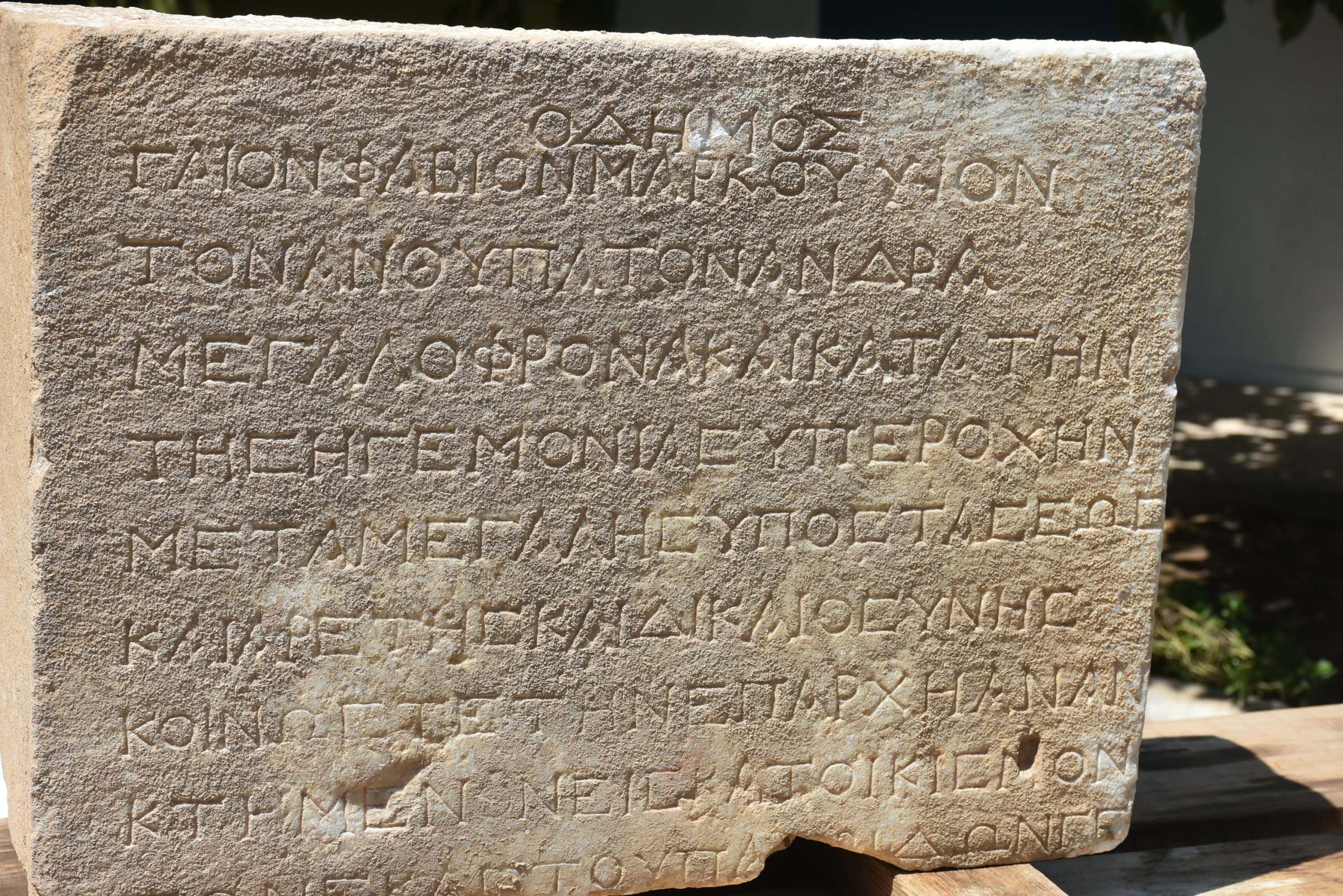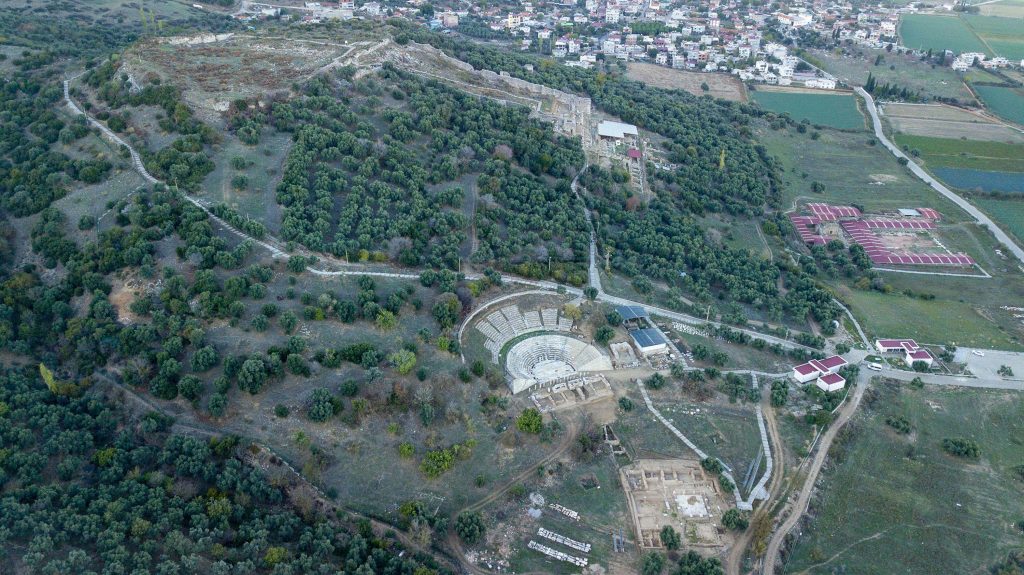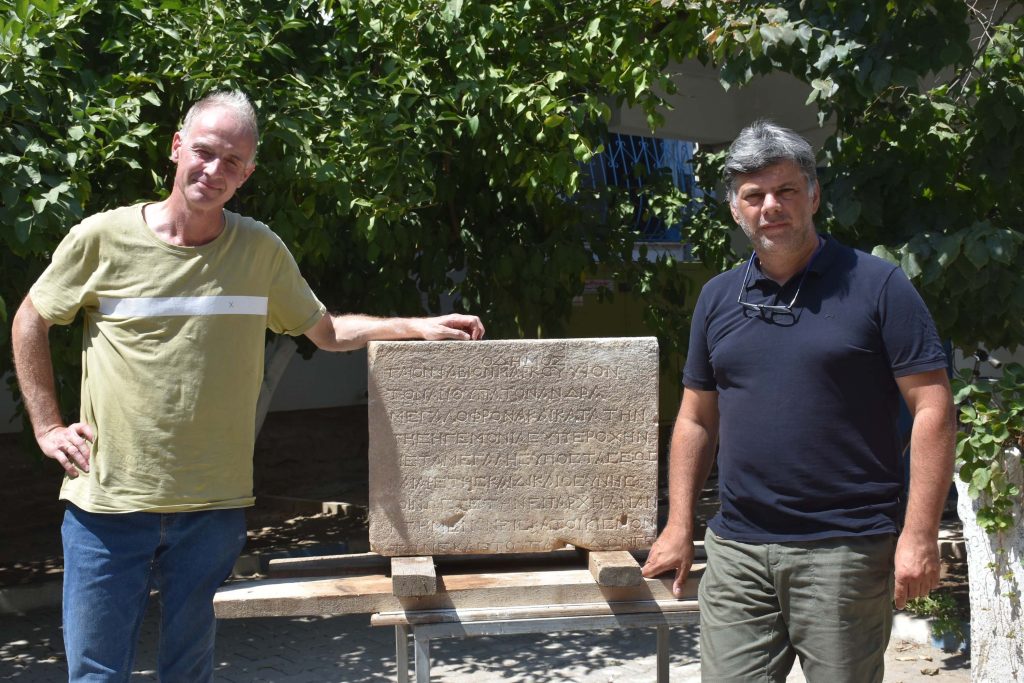
The 2000-year-old honorific inscription found in the ancient city of Metropolis has been deciphered
The 2000-year-old honorific inscription found in the ancient city of Metropolis, known as the ‘City of the Mother Goddess’ in Izmir, has been deciphered.
The ancient city of Metropolis, spanning from the Hellenistic period to the Roman period, takes its name from the ancient Greek mythological term “Metropolis,” which signifies “mother goddess.”
Metropolis began to gain significance from the 4th century BC onwards and experienced significant development, particularly during the period of the Roman Empire. In the ancient times, following the era of Alexander the Great, the city came under the control of the Diadochi (the successors of Alexander the Great), specifically the Seleucids, who arrived in Anatolia.
The renowned historian Strabo noted that this city was a famous wine center in ancient times.

With contributions from İzmir Metropolitan Municipality and Torbalı Municipality, an excavation at the Metropolis Ancient City has uncovered a 2000-year-old inscription. The inscription, written in ancient Greek letters on a marble block, narrates the leadership of Gaius Fabius, who served as the governor of Asia for Rome, within the political context of the Küçük Menderes Valley 2000 years ago.
The 2000-year-old text was deciphered by Prof. Dr. Boris Dreyer, a member of the Metropolis Research Team and an expert from Erlangen University in Germany.

Serdar Aybek, the Head of the Excavation Team from Dokuz Eylül University, who provided information about the inscription, said, “The excavation works for the year 2023 have begun at Metropolis. We found a very important inscription during the excavations. It holds significance for the history of the region. Prof. Boris Dreyer, an expert from Erlangen University in Germany, with whom we have been collaborating for many years, deciphered the inscription. The place where we found the inscription is the ancient city’s council building. It was prepared to honor a ruler who had done beneficial deeds for Metropolis and resolved unrest in the region. It’s actually a part of the council building. One of the architectural blocks in the building forms the written document from 2000 years ago.” Prof. Dr. Boris Dreyer stated about the inscription, “It’s a work that honors Gaius Fabius, who served as the governor of Asia for Rome in the 55s BC, by the people in the Metropolis council. He is an important figure for the region due to his role in suppressing and resolving certain disturbances that occurred during that period. A decision is made in the council to honor him. This inscription here constitutes his documentation.”
The translation of the inscription is as follows: “Gaius Fabius, as one of the administrators serving in the region, made efforts to eliminate the unrest caused by Mithridates VI, which resulted in disturbances here, and worked to restore order to the region. Due to these efforts, the people, through a decision taken by the Metropolis Council, have prepared this inscription to honor him and immortalize his name.”
You may also like
- A 1700-year-old statue of Pan unearthed during the excavations at Polyeuktos in İstanbul
- The granary was found in the ancient city of Sebaste, founded by the first Roman emperor Augustus
- Donalar Kale Kapı Rock Tomb or Donalar Rock Tomb
- Theater emerges as works continue in ancient city of Perinthos
- Urartian King Argishti’s bronze shield revealed the name of an unknown country
- The religious center of Lycia, the ancient city of Letoon
- Who were the Luwians?
- A new study brings a fresh perspective on the Anatolian origin of the Indo-European languages
- Perhaps the oldest thermal treatment center in the world, which has been in continuous use for 2000 years -Basilica Therma Roman Bath or King’s Daughter-
- The largest synagogue of the ancient world, located in the ancient city of Sardis, is being restored











Leave a Reply